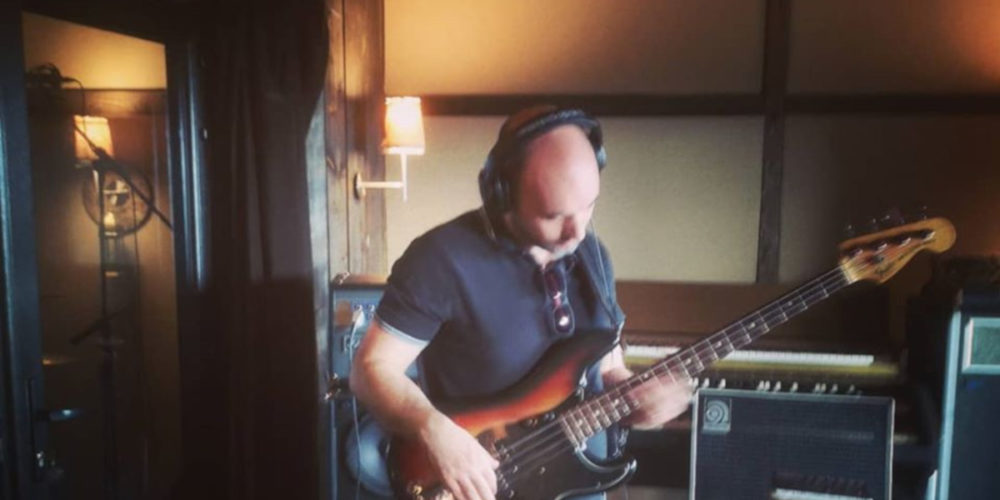I have been a musician for more than twenty years, playing in various original bands, cover bands, and wedding bands. As the whole industry for working musicians becomes ever more uncertain because of covid-19, I have often found myself pondering the question of the value of being a musician.
Many artists in various fields have come, at some point or other in their artistic career, to a stage where they question the value of their art and therefore the value of continuing to produce the art form. This is both a philosophical question and an economic one.
The value of doing something has a very specific meaning to the world we live in and the system that we work and function under. Whether you are conscious of it or not, or whether you like it or not, music, art, theatre and all other creative artistic fields—just like the rest of the forces of production, which create the goods and services to satisfy our needs, wants and desires in society—are part of the capitalist mode of production, the production of the world of commodities, owned by a ruling class
The creative arts, therefore, just like every other industry, are ruled by the laws of motion of capitalism and the centrality of profit as the driving force of the system.
A study group on volume 1 of Marx’s Capital, specifically chapters 1–6,¹ that I have been engaged in over the past couple of months has brought to the fore the value system that Marx was investigating, and I have attempted to frame this article by applying the theory in the context of music, to which I have devoted a lot of time over the last two decades.
The word “value,” for most people, is often conflated with the word “price.” What the value of a song is and the price someone is willing to pay for it are two related but different things.
Value, in the Marxist sense, is the measure of socially necessary labour time employed in creating a particular good or service. In music, and in the creative arts generally, creating something—a song or a piece of music, a picture or a sculpture—means putting the mind and body to work, which is not a straightforward process for the creator. The creative process can vary wildly, and the productivity level in creativity can also be sporadic; songs can sometimes be written in a matter of minutes or in a matter of months. A collection of songs for an album can take years to write or might only take a few weeks.
At the writing stage, a song is a private or personal creation, and within a capitalist framework it has no social value, as it has not been transformed into a commodity that can be exchanged. So, for those of you who write songs for yourself, I’m afraid to say that they have no value (for capitalism, of course!). For it to have value it must be transformed into a commodity: a song must undergo a process of production—arranging, composing, recording and mastering for commercial release.
This may all be done by the original artist in their bedroom or it may enter a division of labour, as the arrangers-composers, musicians, engineers and producers in the big recording studios all impart their particular level of skill and labour time to creating the finished song for commercial release.
It is at this point that the song, or a host of songs in album form, is transformed into a commodity, now a social product, having the potential to be exchanged in a market. Whether or not that potential is realised is dependent on many factors, such as musical taste, trends, genre, market size, financial backing, promotion, marketing, etc. The song in a release format, just like any other commodity, is of no use to the owner other than to be exchanged or sold. The record company, or you as an independent artist, have no use for a pile of boxes of records, cassettes or CDs (for those who remember those formats). Nowadays songs are uploaded to streaming services, where the number of streams is limitless; but just having them available to stream is of no use if they are not streamed—if some process of exchange doesn’t take place.
The price for a song, as we have seen, is related to the value of the song. However, they are not the same thing, as value is a measure of the magnitude of the socially necessary labour time employed in production. Money acts as a medium of exchange, which is a universal representation of that labour time; price, on the other hand, is the level or quantity of money that is attributed to the commodity that is paid in the exchange once it gets to the market.
The price paid (money going to the owner) is only realised after production has taken place, when the particular owner of the commodity comes to the market with other producers of the same commodity and where prices tend to an average but can fluctuate around the average price, depending on supply and demand and changes to production processes, which over time can vary the average price (usually downwards, as technology advances).
The time taken to create a song, or the time it took for a musician to reach a level where they can compose a song, doesn’t really matter if it can easily be transformed into a commodity that can compete with the production level of other producers in the market. A jazz artist, having spent decades on reaching the highest level of music theory and composition, will not command a higher value or price for their single or album than that of a new teenage artist, who plays three chords with a catchy hook, because of their level of skill and the time taken to reach that level. They won’t necessarily be competing for the same audience and market size, but it is the process of the commodification of music that equalises the socially necessary labour time employed in the music commodity.
If an artist is struggling to make large sales for their recorded work they will probably struggle to make sales on tickets from live gigs, and it becomes a perpetual cycle and struggle for artists who want to devote their time and effort to creating music but find it almost impossible to generate enough money, a living wage, from the industry.
We need to leave out the subjective factors of what constitutes “good” or “quality” music and concentrate on the objective factors that will facilitate creative artists in maintaining a career in the industry. There are the costs—cost of living, costs of producing songs (recording, mastering, artwork, promotion, etc.), and costs of gigging and touring—versus the potential sources of income: sales, streams, gigs, merchandise, sync (music used in films or television games) and other royalties, and state grants and supports.
For many independent artists the costs are much higher than the income, because so much of it is weighted on the individual and the group’s ability to invest their own time and money while at the same time being able to afford the high cost of living. As a result, many go into full-time work in other industries or professions, others try to stay within it and join wedding or cover bands, or go into live or recording engineering or a host of other industry jobs to try to subsidise the costs of being a creative artist.
The trade-off in this substitution in wages is time, which over time becomes an obstacle to the creative process and often results in artists and bands eventually breaking up; people become busy with other things, and ultimately that potential to create is socially lost. (A recent trend is for Irish musicians to emigrate to a place—Berlin is one such—where the cost of living is much more affordable, to allow them to continue creating music for longer.)
As we saw, the creative process can vary wildly from artist to artist and even from song to song. It is this, the process of creation, that is actually incompatible with the capitalist system, because creativity is the polar opposite of standardised production. If you can’t standardise something into a process of production it becomes impossible to guarantee a rate of profit that will attract investment. It is this that capitalism cannot abide, and so the capitalist industries have a clear incentive to transform creativity into standardised productivity.
Once creativity becomes standardised it changes from being a creative process into a production process. This is what the major owners of music—the record labels—really care about: producing readily available commodities for quick exchange, to guarantee a profit on their investment. This is why the large monopoly labels that dominate the charts, radio and stream sites, as well as live venues and promotional companies, have tried to standardise creativity, because that is the only way to ensure a consistent level of profit for their investment.
They have tried to create a science of hit-making, with standardised song structures and times, standardised arrangements, standardised production, standardised soundscapes, standardised themes, standardised lyrics, standardised performances, standardised artists. They have a host of ghost writers churning out songs; they will have a selection of professional session musicians and producers ready to record the music. The final piece is to get the marketable front, often a “sex symbol”—the “X Factor” or “American Idol” style of pop group or singer.
This standardisation facilitates the process of music production to maintain continuous reproduction, without having to be reliant on creative artists to get their “moment of inspiration.” The music industry, like many others, has been overtaken and monopolised by a mere three major companies, which own 80 per cent of the market: Sony, Universal, and Warner. Along with the labels, streaming sites have been dominated by a mere two—Spotify and Apple Music. And the Big Three labels are partial owners of Spotify, which then has an obvious interest in ensuring that their artists are promoted on the site.²
The following details, based on an excellent article by Mark Graham, “Does the Irish music industry exist?”show the level of monopoly control over every aspect of the music industry here in Ireland.³
Live music venues and events are dominated by one or two major entertainment and promotion companies. Live Nation is the world’s largest entertainment company, which also owns Ticketmaster. In Ireland it owns 3 Arena and the Bord Gáis Theatre. The largest indigenous record label is Rubyworks (Hozier), owned by Caroline Downey and Denis Desmond, who have shares in Live Nation. They also own a majority share (50 per cent) of MCD, Ireland’s largest concert promoters. They sold the other half in 2018 to Live Nation, which also happens to own Festival Republic, “who run some of the biggest festivals in Britain and Electric Picnic here in Ireland.” Downey and Desmond are also directors of Gaiety Investments, owners of the Gaiety Theatre, the Olympia Theatre, and the Academy.)
This level of ownership, control and management has monopolised Ireland’s music industry, from the record label to radio and the live venue promoters, and everything in between. This means that if you are an independent music creator outside their circuit it becomes nearly impossible to maintain a stable income over time without having that financial backing and investment to help promote the music that is being created.
For many, the choice of continuing to work full time in the creative arts comes down to the bread-and-butter question of “Can I make a living from what I am creating?” In essence, you are examining the likelihood of the commodification of your art, and not the validity of what you create, which can skew an artist to conform to standardised music.
When we question the value of art it is thought of in money terms—because capitalism demands it. But is art only worth something if it can be turned into a commodity, to be exchanged at a certain price, and worth nothing if it can’t? Or is there a value to society in the creative arts, a social usefulness as a way of deepening and widening our cultural expressions and heritage, to be enjoyed by the present and future generations? Will this have positive effects for local communities and youth, who will always look for some outlet for expressing themselves?
I would argue for the latter. However, to ensure a vibrant and diverse range of art forms and artists, the creators and the capital infrastructures have to be invested in and built, including indigenous record labels helping to finance and support artists and bands; small, medium and large venues, stocked with the necessary equipment, accessible and free, or at very low cost to the artist; The recording studios, again accessible at affordable rates, and the promotional end of radio play, focused on our own artists, rather than heavily importing music from the three major labels, as is done at present.
Capitalism and capitalists have no interest in sinking money into these long-term social projects, as the profit returns are not available. They will only further monopolise and control creative outlets in order to guarantee profitability, to the detriment of our culture and society.
In isolation we cannot build a community, an environment within our local towns and villages, that encourages, nourishes and promotes artistic expression in all its forms: it needs the active and conscious engagement of the actual creators to both develop them independently and put pressure on public representatives for transformative demands on the industry, while also gaining the support of the local community, which ultimately will be fundamental in shifting the development of the creative arts.
There are many other ways and ideas worth considering, but until those in the music industry themselves (and other creative industries) begin to question the system under which they create, and begin to have serious conversations about their industry, the status quo will prevail, and creative minds will be stunted.
References
- Karl Marx, Capital, vol. 1 (https://tinyurl.com/p25t9v5).
- Will Meyer, “Taking the music industry monopoly seriously” (https://tinyurl.com/y75ogkyn).
- Mark Graham, “Does the Irish music industry exist?” (https://tinyurl.com/ycx3qs2p).






